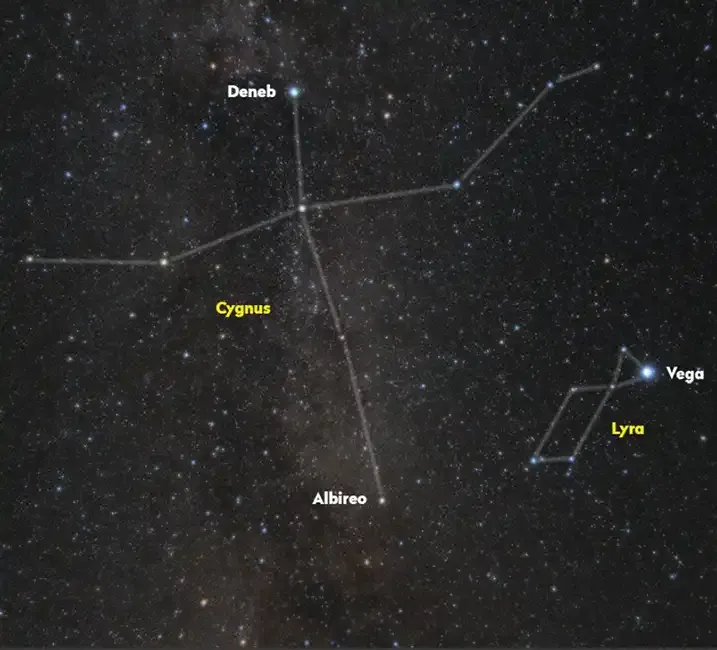
Cygnus, also known as the Northern Cross, is a prominent constellation in the northern sky. Its name is Latin for "swan," and it is one of the most easily recognizable constellations due to its cross-like shape. Cygnus lies along the plane of the Milky Way, making it rich in stars and deep-sky objects. The constellation spans a large area and is best viewed during the summer and early autumn months
Key Features
Cygnus is notable for its distinct cross shape, with the bright star Deneb marking the tail of the swan and forming one of the points of the Summer Triangle, an asterism visible in the northern hemisphere. The "wings" and "neck" of the swan are delineated by other stars, making the constellation resemble a bird in flight. Cygnus is also home to several notable deep-sky objects, including the North America Nebula and the Cygnus X-1 black hole.
Mythology
In Greek mythology, Cygnus is often associated with the myth of Zeus and Leda, where Zeus transforms into a swan to seduce Leda. Alternatively, it is linked to the story of Orpheus, who, after his death, is said to have been transformed into a swan and placed in the sky next to his lyre, forming the neighboring constellation Lyra. The constellation is also associated with the tale of Cycnus, a friend of Phaethon, who mourned his friend's death so deeply that the gods transformed him into a swan.
Notable Stars
- Deneb (Alpha Cygni): The brightest star in Cygnus, Deneb is a luminous supergiant and one of the most distant stars visible to the naked eye. It forms the tail of the swan and is a vertex of the Summer Triangle.
- Sadr (Gamma Cygni): Located at the heart of the cross, Sadr is a supergiant star surrounded by a diffuse nebula known as the Sadr Region.
- Albireo (Beta Cygni): A famous double star, Albireo is known for its striking color contrast between the primary golden star and its blue companion, making it a popular target for amateur astronomers.
Visibility
Cygnus is best observed in the Northern Hemisphere during summer and early autumn. It is visible between latitudes 90° and -40°, making it easily seen from most parts of the world. The constellation is high in the sky during late summer evenings, and its cross shape is easily identifiable even in moderately light-polluted areas.
Tips for Observing
- Find the Summer Triangle: Start by locating the Summer Triangle, formed by the bright stars Deneb, Vega, and Altair. Deneb marks the top of the cross shape of Cygnus.
- Use Binoculars: Although many stars in Cygnus are visible to the naked eye, binoculars can help you spot fainter stars and deep-sky objects like the North America Nebula.
- Look for Albireo: A small telescope will reveal Albireo's beautiful color contrast, making it a favorite among amateur astronomers.
- Observe During Clear Nights: Since Cygnus lies along the Milky Way, dark, clear nights provide the best opportunity to see the dense star fields and nebulae within the constellation.
